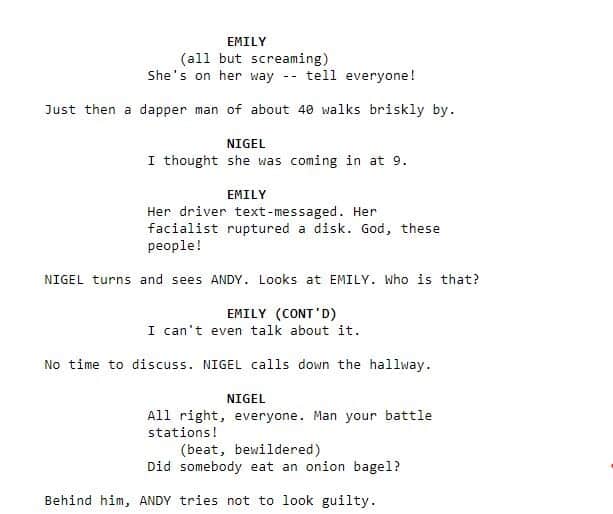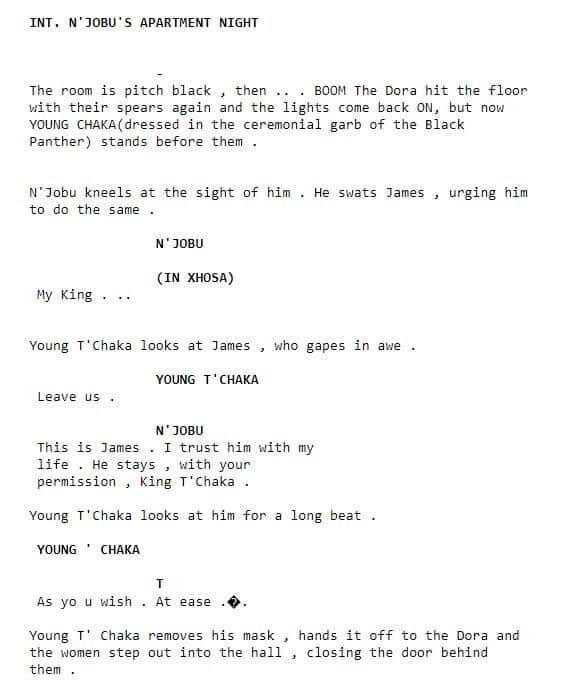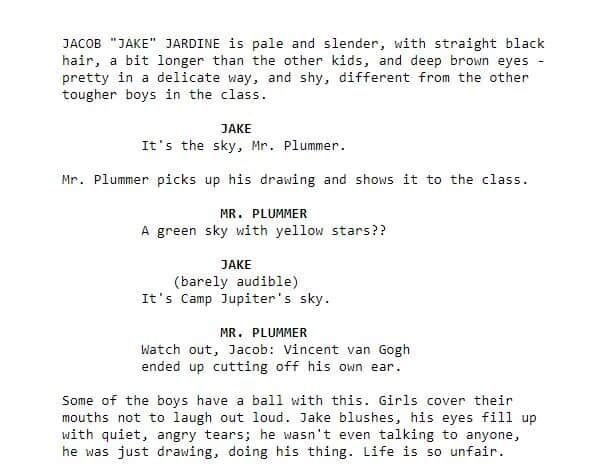When I started writing scripts, I used parentheticals wrong all the time.
I didn’t understand their proper format, what they were really for, and how to use them right.
This post will go over parentheticals related to screenplays, giving you everything you need to know to carry your reader through your script correctly.
What is a Screenplay Parenthetical?
What is a screenplay parenthetical? A screenplay parenthetical is a short description placed between script dialogue to inform the reader of the character’s intent.
Sometimes it could be unclear through other means about a character’s reaction while speaking. This is where parentheticals come in. They clarify the way something’s done.
How do you Write a Parenthetical in a Screenplay?
How do you write a parenthetical in a script? You write a parenthetical in a screenplay by placing (brackets) directly under the character’s name before speaking to indicate the way something is said.
Parenthetical Example:
John (angry whisper) Can I talk to you?
From this example, you can tell that whatever John is talking about, he’s not too happy about it. And whoever hes talking to, they’re in trouble for something.
Because I added the “angry whisper,” you now hear the tone that the line’s delivered. Tone gives insight into how the character is feeling about the situation.
Without it, I would be unsure what John is feeling at this moment.
Can you write multiple parentheticals in the same dialogue? Of course, you can. Let’s use that same example above to illustrate.
Parenthetical Example 2:
John (angry whisper) Can I talk to you? (calming down) Never mind, it can wait.
Screenplay Parenthetical Formatting
The formating of a parenthetical is more about what you shouldn’t do than what you can. Below is a list of ways you should never write them.
- No punctuations (periods or camas)
- No capitalizations of words
- No dashes
- No ellipses
- Don’ put it at the end of the dialogue box.
Please keep it simple; this isn’t the area of a script where you show off.
What is the Purpose of a Dialogue Parenthetical?
What’s the purpose of a dialogue parenthetical? The purpose of a dialogue parenthetical is to communicate the correct intent of a character’s words.
Words are sometimes tricky; readers can interpret them differently from how writers want them to. One way to combat this is through parentheticals.
Parentheticals also help the reader to imagine the situation of the scene better. They can add flair boosting the emotion of any character on the page.
Example:
Sarah Why can't we talk about it?
John It's not a big deal.
The example above is fine, and nothing is wrong with it. We understand that John is brushing off Sarah. Let’s add parentheticals to the mix.
Sarah (pleading) Why can't we talk about it?
John (dosing off) It's not a big deal.
The second example shows how John feels about Sarah’s words. That’s the power of parentheticals.
Every way to use Parentheticals in Screenwriting
Up to this point, we’ve been talking a lot about clarifying words in dialogue. The correct intent of the writer. But in this section, we will discuss how broad that means.
Below are Six ways to use Parentheticals in Screenwriting.
1.) Character Emotions
Character emotion is something I’ve talked about before. But parentheticals is an excellent quick way to give the reader insight into the character’s feelings.
2.) Talking to Multiple Characters
When there are multiple people in a scene, it can be confusing who directly talks to who.
Imagine five people at a dinner table; John is talking to Sarah. Nadiem is talking to Rachel; Harry is mumbling to himself. How do you keep track of what is said to the table and what is said to one person?
Example:
INT. DINNER TABLE - NIGHT
Five college grads sit in front of a feast of the gods. Smiles circle the table until reaching John.
John (to Sarah) Are you going to ignore me the entire night?
Sarah stands, shoving past John's advances.
Sarah (to everyone) Let's raise our glasses to graduate from the most challenging law program in the world.
Everyone cheers.
3.) Character Actions
Using character actions in parentheticals are rarely done because most actions need to be in description lines. But from time to time, I do see a short piece of action.
This does shave off lines on a page; cutting down description will sometimes help the reader scroll faster.
Example:
Sarah (raising her glass) To graduating from the most challenging law program in the world.
4.) Continuing Dialogue
What do I mean about continuing dialogue? When there is a break in dialogue because of action or writing action in the middle of dialogue.
Example:
John I don't know about this.
He picks back up the shovel and starts digging.
John (continuing) I mean, life is hard enough.
The purpose is to let the reader know the character is still the one talking.
Beats and pauses are breaks in action or dialogue. Stopping your character from talking halfway to show shock, nervousness, or stuttering.
Example:
John I don't know about this. (beat) I mean, what do we do after this?
6.) Language Changes
When a character is speaking a different language, but you’re going to continue to write in English, You can indicate this in a parenthetical.
Example:
John (in Japanese) I don't know about this. (beat) I mean, what do we do after this?
Guidelines for Writing Parentheticals
1.) Make it Vital
The question you should ask yourself is: If I didn’t have this parenthetical, would the reader have any idea what I’m trying to say?
You will find that most times they aren’t needed at all. But if you do, it will give the lines the pop they need.
Please take a look at this video explaining what I mean.
2.) Keep it short
Real short. one to three words is best. If your parenthetical is an entire sentence, you’re doing way too much. No producer is going to want to read all that.
If it’s already short, try to find ways to make it even shorter.
Example:
(he raises his gun)
Becomes.
(raises a gun)
In screenwriting, speed matters.
How Often should you use Parentheticals?
On average, parentheticals are used once per page. Meaning out of a 120-page script, you will have 120 parentheticals. This is a good measurement tool to stay under and not overuse this tool.
If you find yourself overusing them, that could mean your descriptions aren’t good enough.

Professional screenwriter Aron Sworkin uses 1.51 parentheticals per page, according to research by John august. And most of his scripts are dialogue.
So if you’re doing more than him, you need to check yourself.
Parenthetical Script Examples
Below are some examples from scripts and movies I enjoy.

I like the use of creativity here. “All but screaming,” tells you exactly how she’s delivering the line without directing the actors. Brilliant.

An example of how to switch languages in scripts through the use of parentheticals.

Great use of one here as it shows who is in power in the scene and how Jake responds to Mr. Plummer.
Conclusion
Okay, now we are finished with this subject. Everything you need to know about parentheticals. The when, how, why, and the what.
Now its time to hear from you:
Did I miss anything?
How have you seen them used that I didn’t discuss?
Whatever your answer is, let’s hear it in the comments below.
Happy writing.

